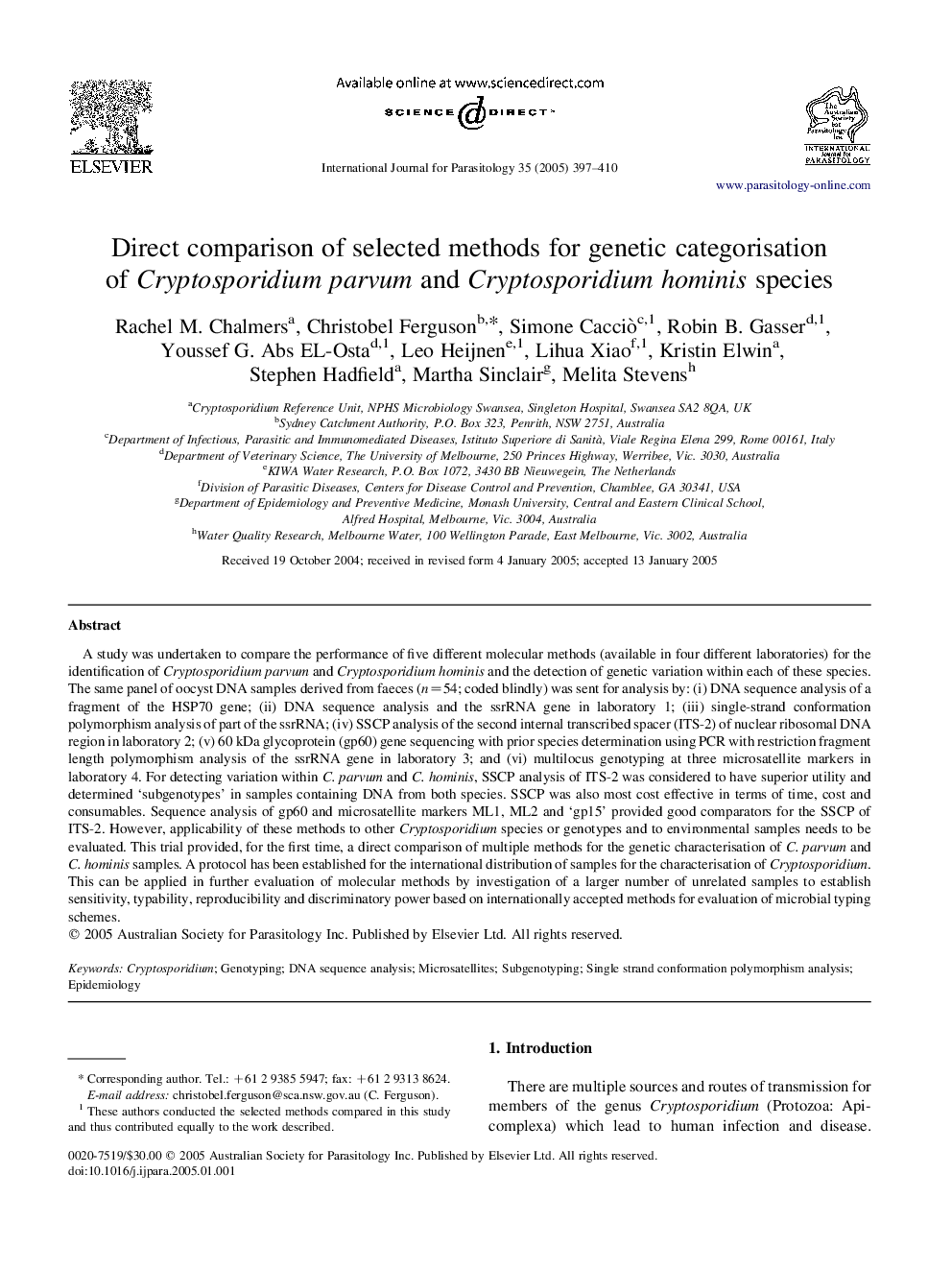| Article ID | Journal | Published Year | Pages | File Type |
|---|---|---|---|---|
| 8979917 | International Journal for Parasitology | 2005 | 14 Pages |
Abstract
A study was undertaken to compare the performance of five different molecular methods (available in four different laboratories) for the identification of Cryptosporidium parvum and Cryptosporidium hominis and the detection of genetic variation within each of these species. The same panel of oocyst DNA samples derived from faeces (n=54; coded blindly) was sent for analysis by: (i) DNA sequence analysis of a fragment of the HSP70 gene; (ii) DNA sequence analysis and the ssrRNA gene in laboratory 1; (iii) single-strand conformation polymorphism analysis of part of the ssrRNA; (iv) SSCP analysis of the second internal transcribed spacer (ITS-2) of nuclear ribosomal DNA region in laboratory 2; (v) 60Â kDa glycoprotein (gp60) gene sequencing with prior species determination using PCR with restriction fragment length polymorphism analysis of the ssrRNA gene in laboratory 3; and (vi) multilocus genotyping at three microsatellite markers in laboratory 4. For detecting variation within C. parvum and C. hominis, SSCP analysis of ITS-2 was considered to have superior utility and determined 'subgenotypes' in samples containing DNA from both species. SSCP was also most cost effective in terms of time, cost and consumables. Sequence analysis of gp60 and microsatellite markers ML1, ML2 and 'gp15' provided good comparators for the SSCP of ITS-2. However, applicability of these methods to other Cryptosporidium species or genotypes and to environmental samples needs to be evaluated. This trial provided, for the first time, a direct comparison of multiple methods for the genetic characterisation of C. parvum and C. hominis samples. A protocol has been established for the international distribution of samples for the characterisation of Cryptosporidium. This can be applied in further evaluation of molecular methods by investigation of a larger number of unrelated samples to establish sensitivity, typability, reproducibility and discriminatory power based on internationally accepted methods for evaluation of microbial typing schemes.
Keywords
Related Topics
Life Sciences
Immunology and Microbiology
Parasitology
Authors
Rachel M. Chalmers, Christobel Ferguson, Simone Cacciò, Robin B. Gasser, Youssef G. Abs EL-Osta, Leo Heijnen, Lihua Xiao, Kristin Elwin, Stephen Hadfield, Martha Sinclair, Melita Stevens,
